
When you’re starting or scaling a clothing store online, picking the right ecommerce platform isn’t just about tech — it’s about setting up a store that matches how people shop for clothes today.
After 12+ years working in ecommerce — testing platforms, helping brands grow, and running ecomm.design — I’ve seen what works and what holds stores back.
From mobile speed to how you display colour and size variants, the little details make a big difference.
Here’s my honest breakdown of the best ecommerce platforms for clothing brands — based on actual usability, not marketing fluff.
TL;DR:
The best ecommerce platform for clothing depends on your stage and needs.
- Shopify: Best all-rounder, great for new and growing fashion brands
- Wix: Simple and fast for small launches
- WooCommerce: Ideal if you’re on WordPress and want full control
- BigCommerce: Great for large inventories and scaling
- Squarespace: Perfect for design-led or minimalist brands
- Shopwired: Solid UK-based option with built-in features
You don’t need the perfect platform — just one that lets you launch, sell, and improve over time.
6 Best Ecommerce Platforms for Clothing
When it comes to selling clothes online, your ecommerce platform needs to do more than just list products. It has to handle size and colour variants, look good on mobile, and make checkout frictionless.
I’ve tested and reviewed dozens of platforms over the years, and these six consistently stand out — whether you’re launching a new brand or scaling an established one.
1. Shopify: The No-Brainer for Fashion Stores
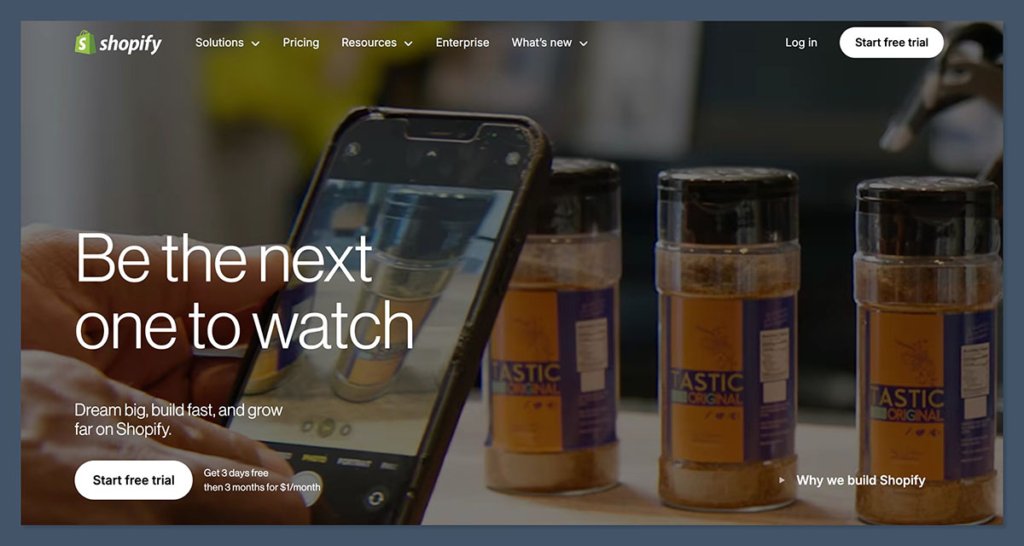
If I had to bet on one platform for a clothing brand to scale with, it’d be Shopify.
I’ve reviewed hundreds of stores on ecomm.design, and over half of them are built on Shopify — for a reason.
Why it works:
- You can get a clean, professional store live fast with fashion-forward themes
- Product variants are easy to manage — colours, sizes, bundles — no headaches
- The app ecosystem is massive (and battle-tested)
- Checkout is smooth, especially on mobile — which is where most fashion purchases happen
- Shop Pay helps boost conversion rates with one-click checkout
I’ve personally tested platforms side-by-side, and Shopify’s blend of ease and flexibility keeps winning. Brands like Fashion Nova, Gymshark, and Kylie Cosmetics all built their growth here.
Things to watch:
It’s easy to overspend on apps. Keep your stack lean — focus on tools that drive revenue, not bells and whistles.
Shopify ecommerce website examples
2. Wix Ecommerce: For Small Fashion Startups
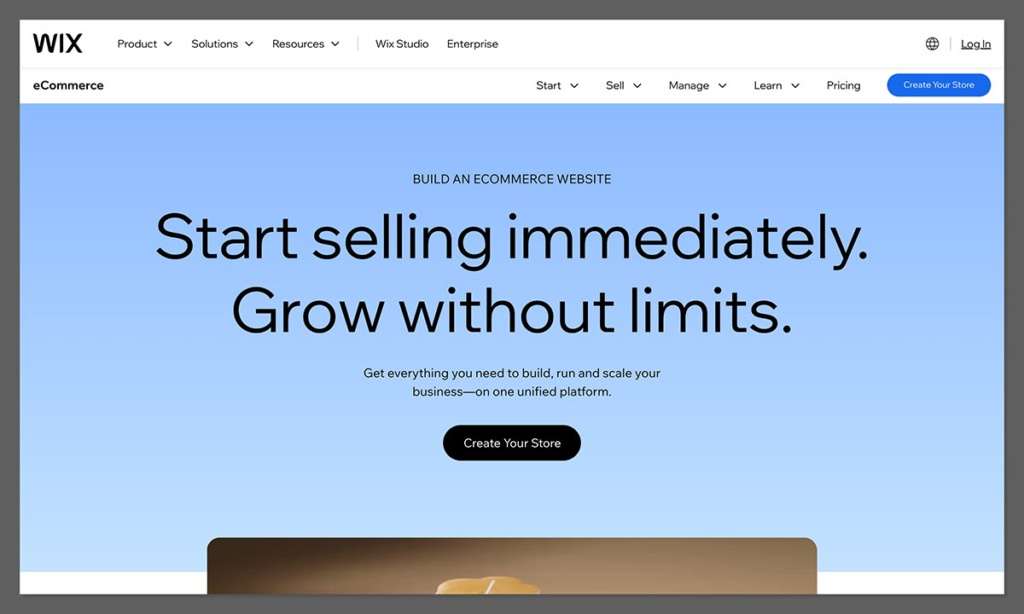
Wix has come a long way from being “just a website builder.” If you’re starting a small clothing line or testing an idea, Wix gives you just enough to launch without friction.
Why it works:
- Drag-and-drop interface is super intuitive
- Nice range of modern templates for fashion and retail
- Built-in ecommerce functionality — no extra setup
I’ve tested Wix builds for smaller fashion startups and side hustles. It works great for limited product lines — say 10 to 50 SKUs. If you start scaling, you’ll eventually hit some limitations, but it’s a low-risk way to start selling online fast.
3. BigCommerce: Built for Scale
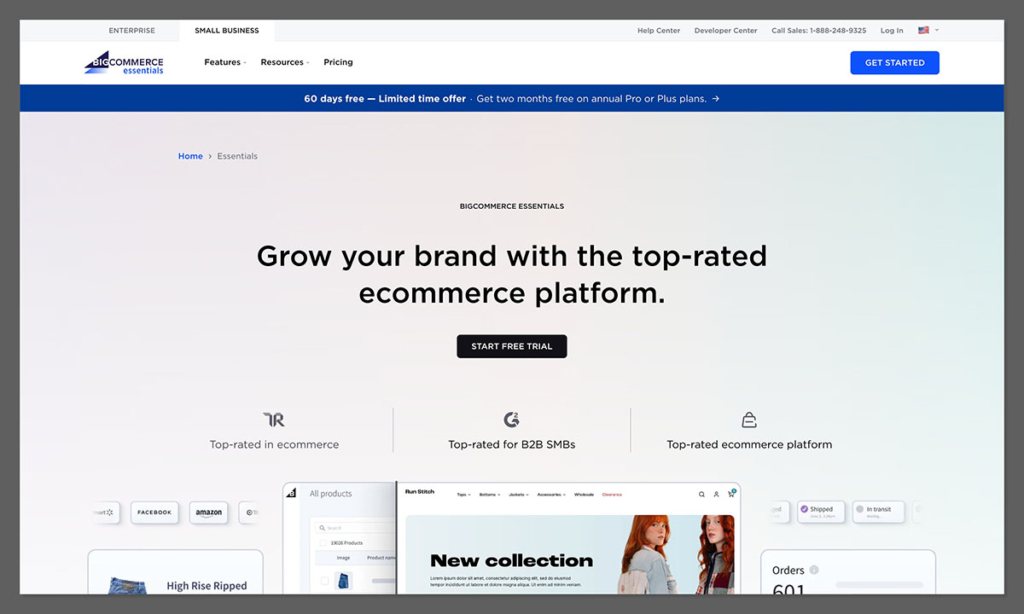
If you’ve got a large catalogue, sell in bulk, or run both B2C and B2B, BigCommerce gives you the backend horsepower to handle it.
Why it works:
- Unlimited variants and SKUs — perfect for managing large fashion inventories
- Strong built-in SEO tools
- No need for tons of third-party apps to get started
- Multi-channel selling built in (Amazon, eBay, Facebook, etc.)
I’ve helped several high-growth brands migrate to BigCommerce when Shopify or WooCommerce couldn’t keep up. The platform is fast, stable, and made for serious operators.
Just keep in mind — it’s more structured than Shopify, so you’ll trade some design flexibility for stability.
4. Squarespace: For Indie Brands and Design-Led Fashion

If design matters a lot — think minimalist brands, boutique labels, or portfolio-driven stores — Squarespace hits the mark.
Why it works:
- Beautiful design templates out of the box
- Great image handling and responsive design
- Simple inventory and checkout tools
I’ve worked with fashion brands that use Squarespace to tell a story, not just sell products. It’s great for visual storytelling and lifestyle-driven clothing brands. But it’s not built for massive catalogues or advanced customisation.
Squarespace ecommerce website examples.
5. WooCommerce: Great If You’re Already on WordPress
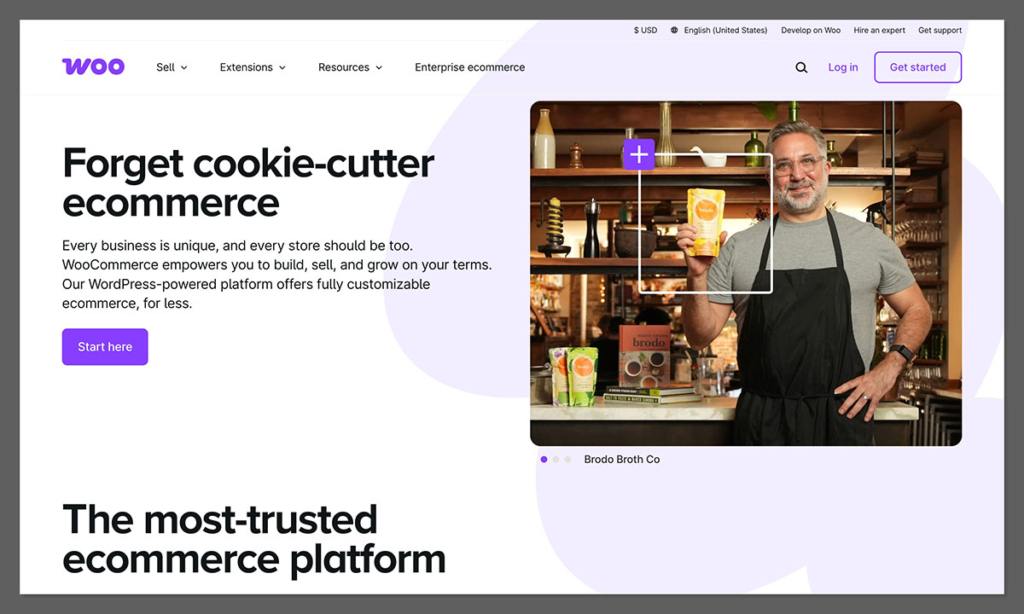
If your site is already running on WordPress and you want more control over how everything works, WooCommerce is solid — especially if you have dev resources.
Why it works:
- It’s fully open-source — you can customise anything
- Lots of fashion plugins and themes available
- Better SEO flexibility than most platforms
- No monthly platform fees
I’ve worked with fashion brands that built powerful WooCommerce stores — but they had developers in-house or on retainer. If you’re solo or non-technical, this might slow you down.
Still, WooCommerce is the best bet for people who want control and already live in the WordPress world.
6. Shopwired: The UK’s Hidden Gem
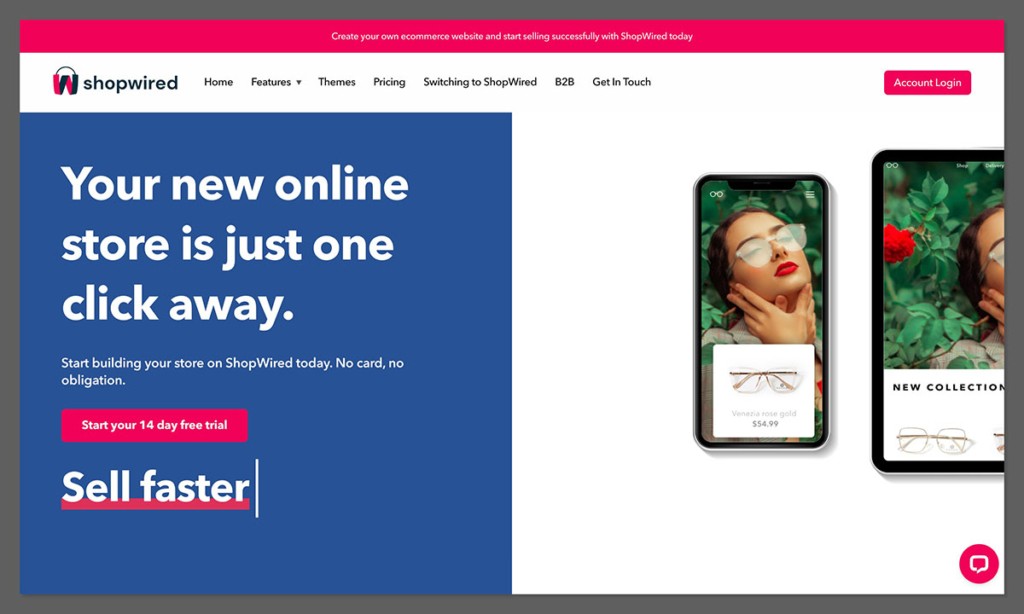
If you’re based in the UK, Shopwired is worth looking at. I came across it while reviewing niche platforms, and was genuinely impressed by its speed and simplicity.
Why it works:
- UK servers = fast load times for local customers
- VAT handling and compliance are spot on
- Built-in tools replace the need for a bloated app stack
While not as well known as Shopify or BigCommerce, Shopwired is well-optimised for British businesses. I’ve seen it work well for mid-size clothing brands wanting a no-fuss setup.
7. Sellfy: Ideal for Creators and Small Apparel Drops

If you’re a content creator, influencer, or designer launching limited clothing drops or merch, Sellfy makes it easy to set up shop without touching code.
Why it works:
- Super simple setup — no tech skills needed
- Built-in print-on-demand support
- Supports digital products and subscriptions
- Clean storefronts that work on mobile and desktop
I’ve seen creators go from idea to selling shirts in under an hour using Sellfy. It’s not built for large-scale fashion brands, but if you’re starting small and selling direct to your audience, it does the job.
A good fit for creators who want to monetise fast without getting bogged down in ecommerce complexity.
8. Zyro (Hostinger Website Builder): Lightweight and Beginner-Friendly
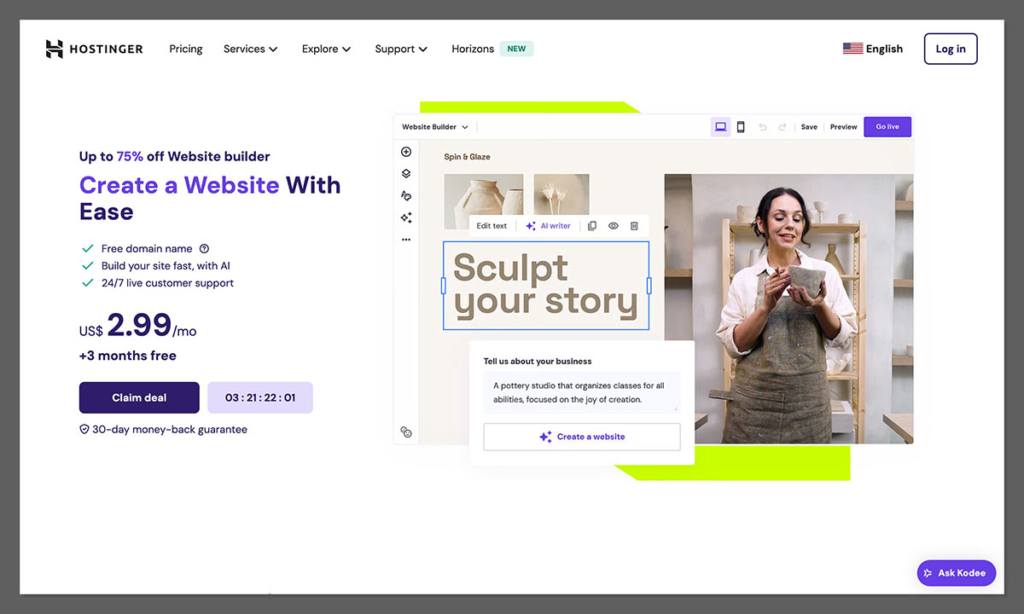
Zyro, now part of Hostinger, is one of the easiest ways to launch a small clothing store with a clean, modern design — perfect for solo founders and side hustlers.
Why it works:
- Drag-and-drop builder that’s super intuitive
- Fashion-focused templates look polished out of the box
- Built-in AI tools for copy and image editing
- Low monthly cost
I’ve tested Zyro builds for lean fashion startups. It doesn’t have the depth of Shopify or BigCommerce, but for launching fast and looking good without stress — it holds up.
Best for small product ranges and people who want to skip the tech setup entirely.
9. Volusion: Reliable for Small to Mid-Size Fashion Brands
Volusion’s been around for a while, and while it’s not as modern as some competitors, it still works well for smaller clothing stores that need a stable backend and clean layout.
Why it works:
- Good support for clothing variants like size and colour
- Built-in SEO tools and analytics
- No transaction fees
- Includes basic CRM features like customer reviews and discounting
I’ve seen Volusion work best for stores with 50–500 products that aren’t pushing heavy growth but want something that just works. The interface feels a bit dated, but it covers the essentials.
A safe bet if you want a straightforward, mid-level ecommerce platform with low overhead.
10. Ecwid by Lightspeed: Best for Adding a Store to an Existing Site

Ecwid is perfect for brands that already have a website or social presence and just want to layer in ecommerce without rebuilding from scratch.
Why it works:
- Works with any site: WordPress, Wix, Squarespace, etc.
- Fast to set up and lightweight
- Free plan available for up to 5 products
- Syncs with social platforms and marketplaces
I’ve worked with bloggers and influencers who used Ecwid to add a shop to their site in under an hour. It’s not for full-scale ecommerce operations, but if you’re adding a storefront to an existing audience — it’s perfect.
Ideal for people testing the waters or expanding into ecommerce from content.
11. Squarespace Commerce Advanced: Stronger Tools for Growing Fashion Brands
Squarespace is known for clean design, but its Commerce Advanced plan takes things a step further, making it more viable for scaling fashion brands.
Why it works:
- Includes abandoned cart recovery
- Supports subscriptions and recurring products
- Advanced shipping and discount options
- Great for visually-driven brands
I’ve seen stores start on the basic plan, then upgrade as they grow — especially when repeat customers become important. This plan gives you the features needed to go from “side project” to “real business.”
Great for fashion brands with a premium feel that want more power without switching platforms.
12. OpenCart: Full Control for Developer-Driven Stores
OpenCart is an open-source platform, similar to WooCommerce, but not tied to WordPress. It’s made for people who want flexibility and aren’t afraid to dive into the backend.
Why it works:
- Free to use and self-hosted
- Highly customisable with extensions and themes
- Multi-store support out of the box
- Strong international features
I’ve worked with development teams who love OpenCart because of the freedom it gives — but it’s not for beginners. You’ll need hosting, technical knowledge, and time to manage it properly.
Best suited for fashion brands that want total ownership and have tech resources to support it.
Final Thoughts: What’s Best for You?
After working with hundreds of ecommerce stores, I’ve realised this: most people waste time chasing the “perfect” platform instead of launching.
That’s usually what holds them back.
Truth is, there’s no one-size-fits-all platform. Each has its strengths — it just depends on where you are in your journey, what you’re selling, and how much control you want over the experience.
Here’s how I break it down:
➤ New brand or testing a small clothing line?
Go with Shopify or Wix.
They’re fast to launch, beginner-friendly, and won’t get in your way. If you’re validating a product or building a brand from scratch, these platforms make it easy to focus on marketing and sales — not fighting with tech.
Shopify gives you room to grow, while Wix keeps things simple if you’re starting super lean.
➤ Already on WordPress and want full control?
WooCommerce is the obvious choice.
If your site already runs on WordPress and you’re comfortable with plugins or have a dev on call, WooCommerce gives you the most control. You can tweak every part of the store, and it’s especially strong if SEO is part of your growth plan.
But remember — with great control comes more maintenance. You’ll need to stay on top of updates, plugins, and site health.
➤ Planning to scale big with lots of products or channels?
Look at BigCommerce.
If you’re dealing with large inventories, multiple categories, or even wholesale and B2B — BigCommerce has the backend muscle. You won’t need 15 plugins to do basic stuff, and it’s built to handle growth without falling apart.
I’ve worked with brands who switched to BigCommerce after outgrowing other platforms — it’s a great long-term solution if you’re thinking five steps ahead.
➤ Design-led brand with a clean, minimal aesthetic?
Use Squarespace.
Some fashion brands don’t just sell clothes — they sell a look. Squarespace helps you build that brand vibe right out of the box.
It’s especially strong for stores where content and visuals matter — like lookbooks, portfolios, or lifestyle branding. You won’t get the same depth of customisation as Shopify or WooCommerce, but if you’re running a tight, curated product line — it’s more than enough.
➤ Selling in the UK and want local support?
Try Shopwired.
Not many people know about Shopwired unless they’re in the UK ecommerce scene, but it’s a strong platform with solid support, fast UK hosting, and features that actually make sense for British businesses — like easy VAT setup.
I’ve seen it work well for fashion brands that want performance without bloat — especially those shipping primarily within the UK.
Bottom line?
You don’t need to pick the best platform on day one. You need one that’s good enough to launch fast, learn what’s working, and start making sales.
You can always upgrade or migrate later — and when you do, you’ll know exactly what you need because the data will tell you.
Start simple.
Learn fast.
Scale smart.
That’s how winning stores are built.
FAQs
What’s the best ecommerce platform for fashion startups?
Shopify is a solid all-rounder, especially with starter themes and easy product setup. Wix is another good option for small launches.
Is WooCommerce good for clothing stores?
Yes, especially if you’re on WordPress and have technical support. It gives you full control, but the setup is more hands-on.
Which ecommerce platform is best for scaling a large clothing brand?
BigCommerce is built for scale — it can handle large catalogues, B2B, and multiple storefronts without slowing down.
Is it worth paying for premium fashion themes?
If your brand relies heavily on visual design, yes. Shopify, WooCommerce, and Squarespace all offer excellent premium themes tailored for fashion.
Do I need mobile-first design?
Absolutely. Over half of clothing sales now happen on mobile — if your store doesn’t load and convert fast on a phone, you’re leaking money.






